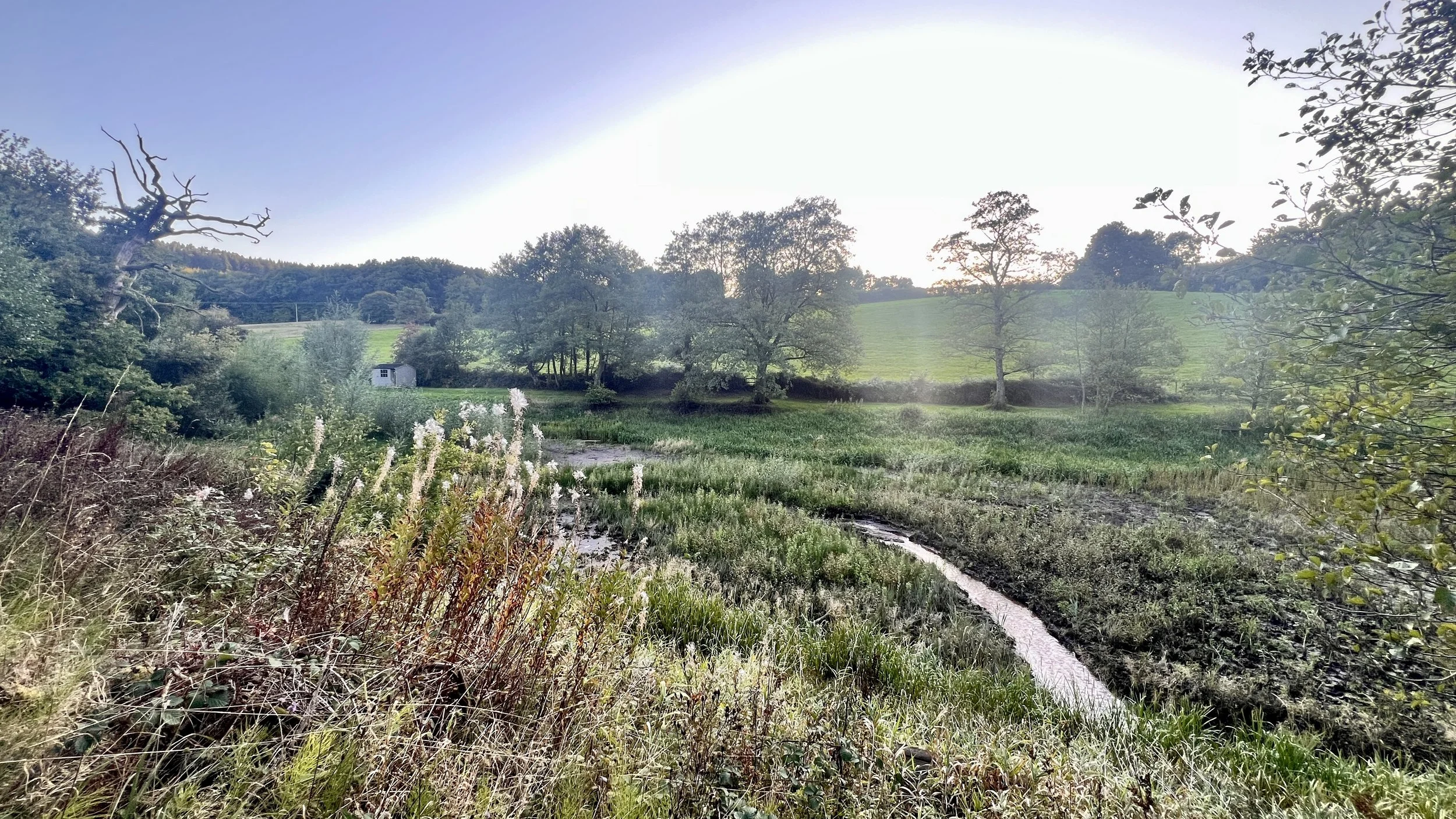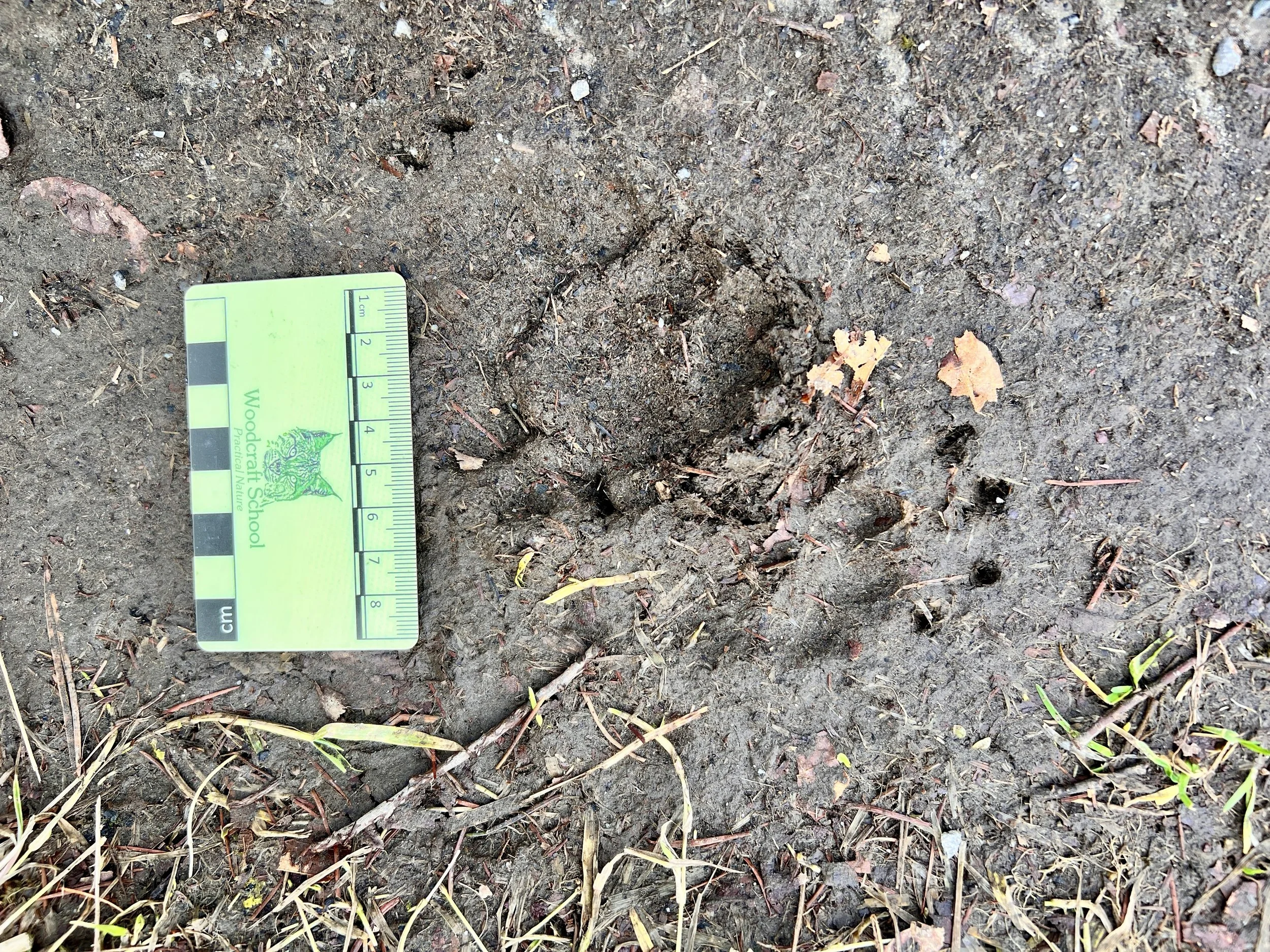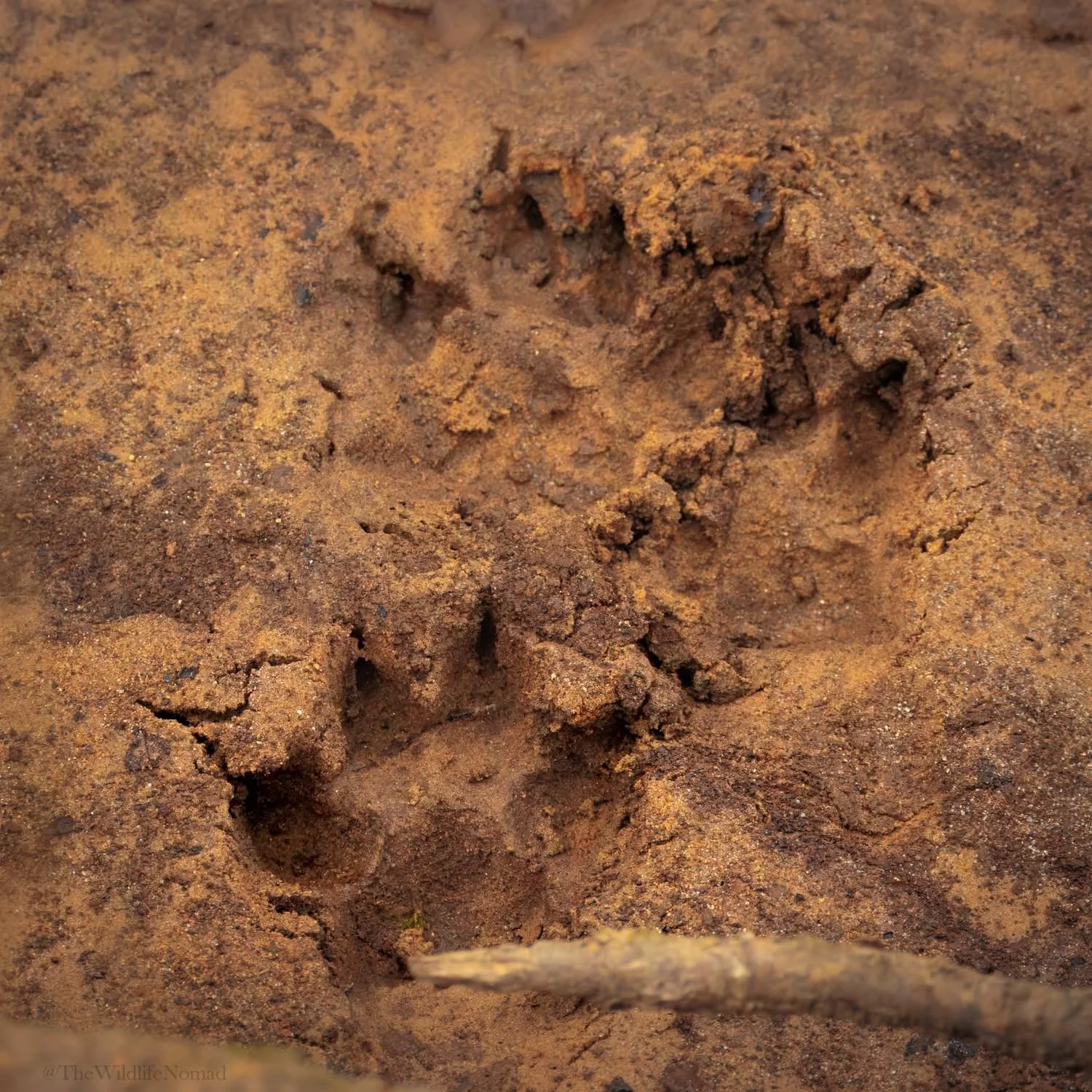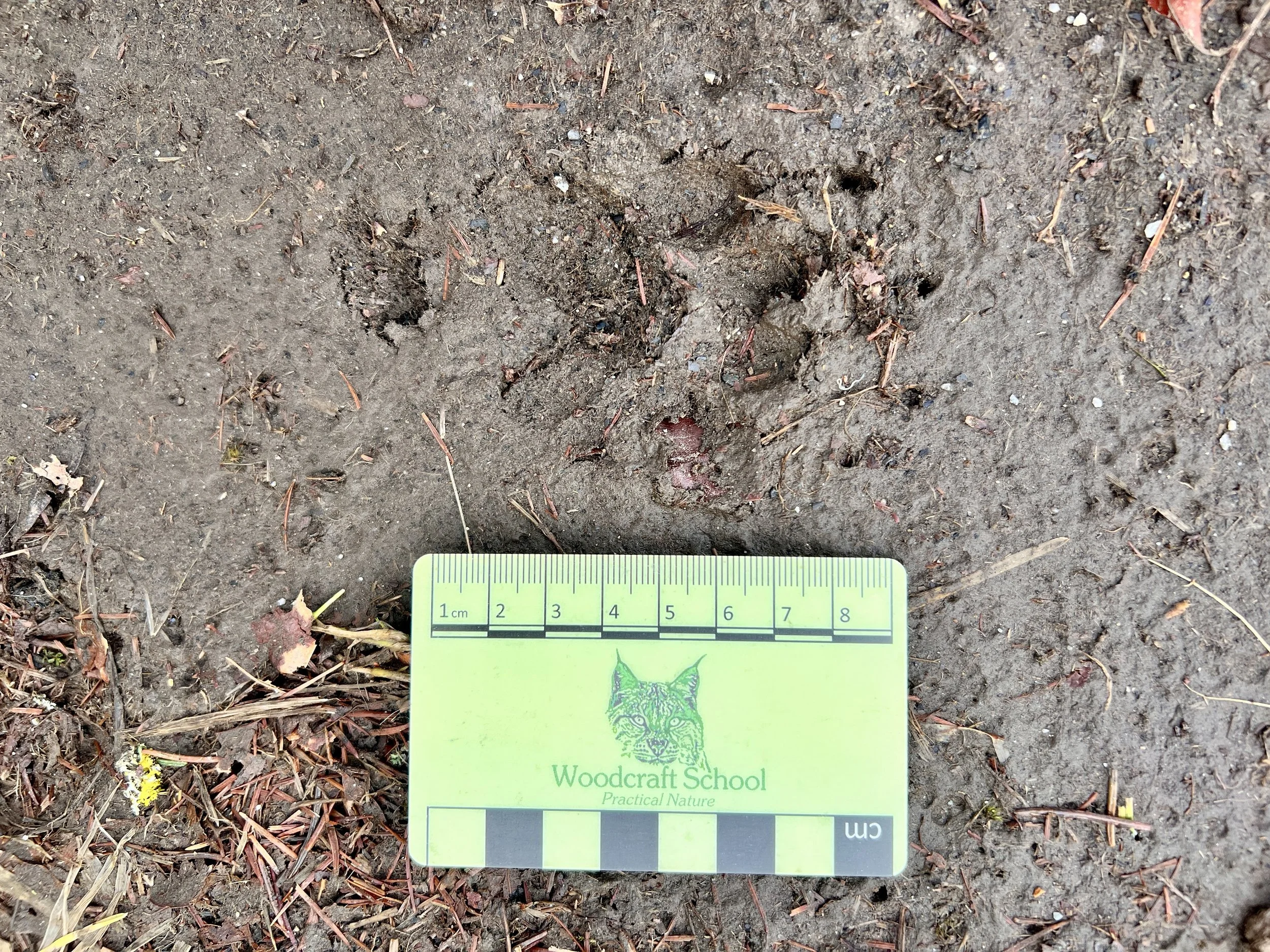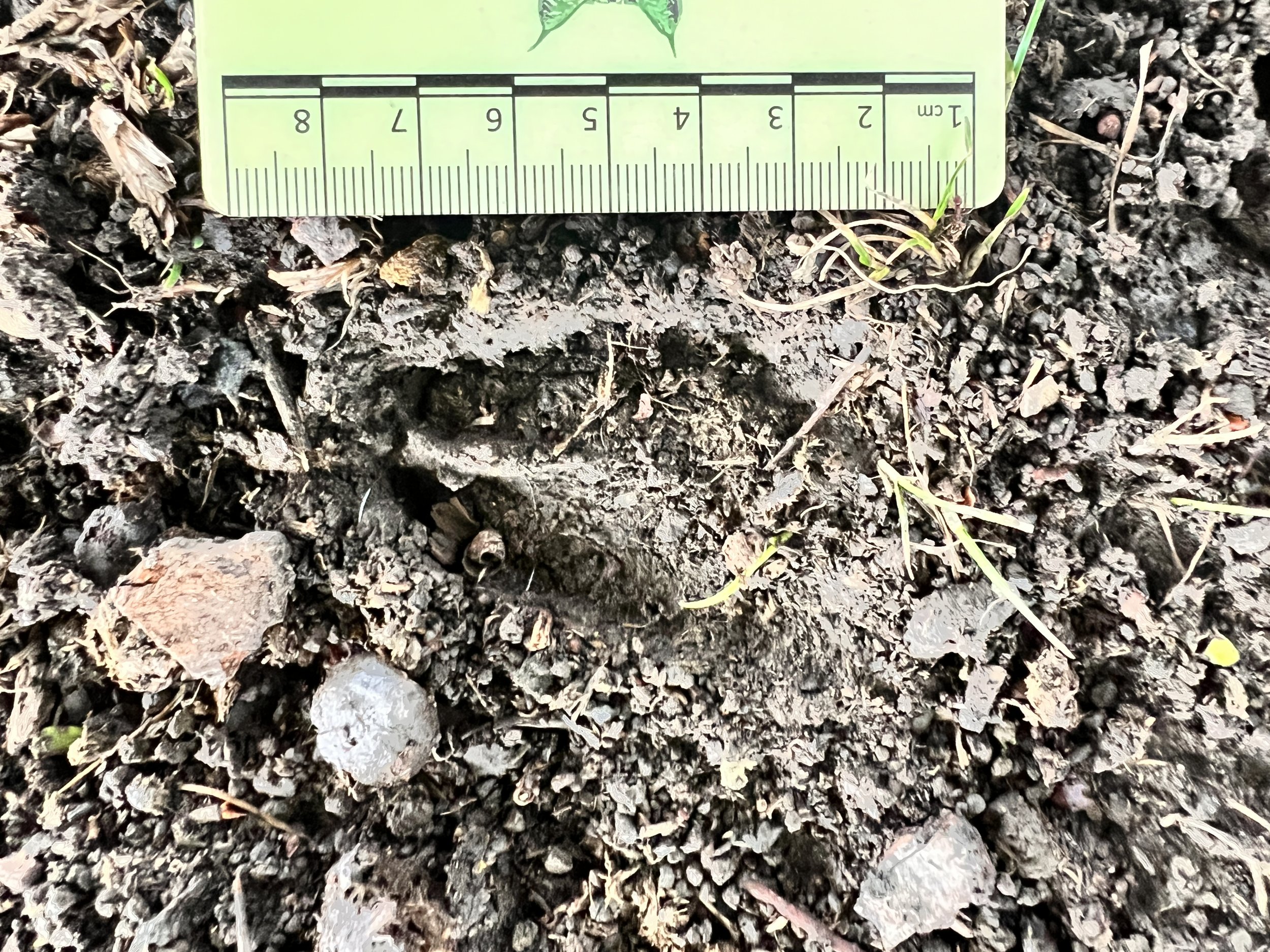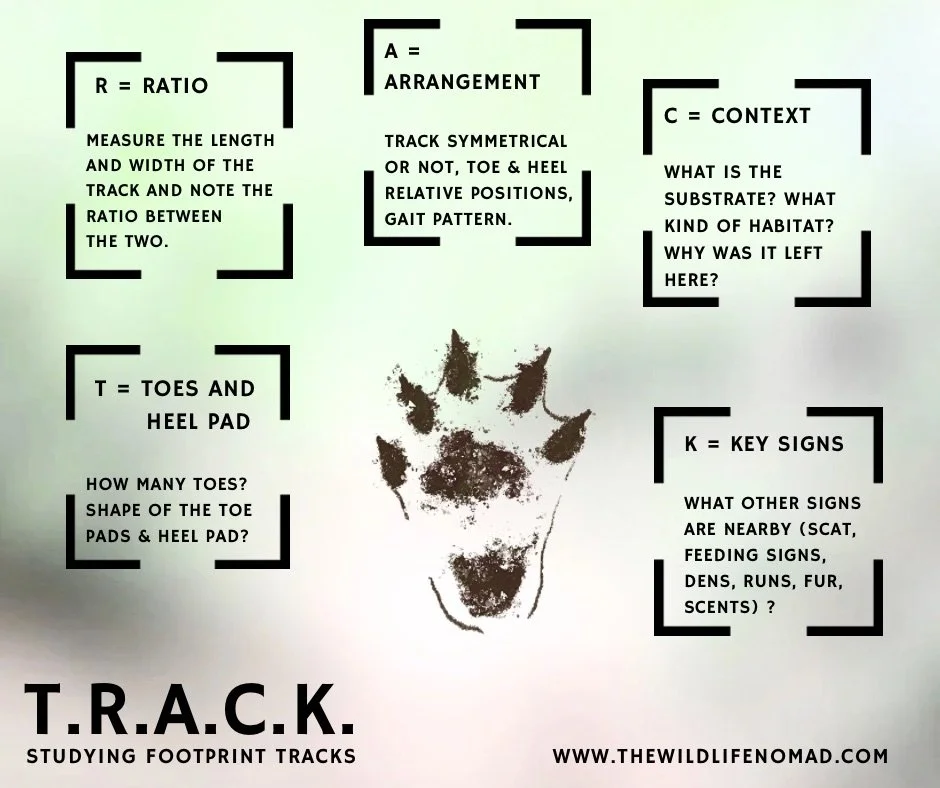Fieldcraft Friday: How to Read and Photograph Animal Signs
Introduction: When Rain Turns the Land into a Storybook
After rainfall, the countryside changes character. Mud glistens, the air thickens with scent, and the paths and fields become storybooks written overnight. I am not an expert tracker (in fact I would consider myself very much at the start of my journey), but after a few years of poking around in the mud I can honestly say I’ve learnt more about wildlife behaviour from tracking than almost anything else I have done in the field.
For wildlife photographers and wildlife watchers, Autumn is one of the richest times to be outside. Rain doesn’t just refresh the landscape, it records movement. Every footprint, every pressed leaf, every faint claw mark tells you who has passed by and when.
Learning to recognise and photograph animal tracks after rain is one of the most rewarding skills in wildlife photography and fieldcraft. It helps you understand patterns of movement, anticipate behaviour, and make photographs that come from knowledge, not luck.
Why Rain Is the Tracker’s Ally
Rain resets the land. It softens hard soil and leaf litter, washes away old prints, and leaves a new surface for wildlife to inscribe their movements.
For a wildlife watcher, that means any clear print you find after rain is likely fresh (less than twelve hours old). For a wildlife photographer, that freshness is gold: it tells you which routes animals are currently using, where to set cameras, and when to return.
The hours after rain are when the countryside speaks clearest.
Where to Look for Tracks After Rain
Good tracking starts with good terrain. Focus on soft, muddy ground or sandy ground that holds shape:
Damp forest rides, gateways, and footpaths
Bare soil around field edges or livestock troughs
Silt banks along rivers and ponds
Mossy hollows beneath hedges and fallen trees
The shaded sides of slopes that stay wet longest
These areas act like wildlife crossroads. On my patch in the Wye Valley, badger paths cross deer trails, while foxes, squirrels, and birds leave layered stories on the same short stretch of woodland track.
When starting out you can increase your chances of seeing tracks by targeting wetter habitats, or visiting woodland paths, gateways and other potentially muddy areas after rain.
Common UK Tracks: What to Look For
Each species leaves its own signature in size, shape, and rhythm. The more you study them, the clearer their stories become.
Large Mammals
Fox: Four oval toes and a pointed heel pad, typically in a straight line — calm and confident. Around 5 cm long.
Badger: Broad, five-toed print with long front claws showing. Often beside snuffle holes or dung pits.
Roe or Fallow Deer: Heart-shaped slots with the points forward; close pairs mean walking, wide spacing means running.
Medium-Sized Mammals
Otter: Five toes with webbing marks, about 6–8 cm across, sometimes with tail drag or slide marks on mud.
Rabbit: Hind feet long and narrow (7–9 cm), placed ahead of the smaller, round forefeet in a “Y” pattern when hopping.
Brown Hare: Similar to rabbit but larger (10–14 cm) and more elongated. Often spaced further apart, showing longer bounds.
Grey Squirrel: Hind feet longer than forefeet. Front feet four toes, hind feet five toes. In bounding gait the hind prints land ahead of the fore, forming a neat four-print cluster. Look under trees and log piles where ground stays soft.
Small Mammals
Hedgehog: Tiny (2–3 cm) with five short toes and a wide, almost circular pad. Best seen on smooth mud near paths or compost heaps.
Wood Mouse: Less than 2 cm long; forefeet show four toes, hind feet five. Often appear as small paired dots with tail drags between.
Weasel or Stoat: Elongated sets of paired prints (2–4 cm), sometimes in a bounding pattern; sharp claws often visible.
Mole: Five-toed spade-like impressions near soil heaps; rarely seen clearly but distinctive when visible.
Birds
Pheasant or Crow: Three forward toes and one back; prints around 7–10 cm long.
Robin or Wren: Tiny (1.5–2 cm), delicate patterns on fine mud.
Heron or Moorhen: Long, splayed toes near water; heron prints can reach 12–15 cm.
Lapwing: Broad “Y” shape with gentle claw marks, often in groups on wet pasture.
Each of these signs can be beautifully photographed with care and patience. A simple 25 mm scale or small ruler beside the track adds vital context and helps tell a visual story , especially for your field notes.
Fieldcraft for Photographers: Reading Without Disturbing
Ethical wildlife photography means working around wildlife, not blundering into it. Once you find a fresh print:
Step aside, never on. Photograph from the edge with a macro or 35–50 mm lens at f/8–f/11.
Use a small reflector or side light to lift texture if the light is flat.
Record direction and depth, then stand back and read the wider picture………where did the animal enter, where did it leave?
Plan your next visit from a respectful distance, ideally downwind at dawn or dusk.
This habit (observe, don’t pursue) is the foundation of ethical fieldcraft and the surest path to genuine encounters.
Technical Tips for Track Photography
Time: Early morning after overnight rain.
Light: Overcast skies for diffuse detail; avoid harsh shadows.
Focus: Manual focus to keep the print edges crisp.
Perspective: Shoot low and parallel to emphasise depth.
Support: Use a beanbag, ground plate, or tripod with short legs.
Composition: Include surrounding texture (leaf litter, twigs, or water ripples) to anchor the print in place. Even better shoot one close up of the track and one image showing the environment
For Wildlife Watchers: Reading Behaviour in Prints
Every set of tracks is a fragment of behaviour.
A squirrel’s bounding pattern tells of feeding and tree-hopping.
A fox’s straight-line walk shows purposeful patrolling.
Badger prints circling logs or bramble patches reveal foraging.
Clusters of deer slots near a stream hint at drinking, or passage along the waters edge.
Once you start to interpret these signs, you’ll realise how much wildlife moves unseen around you, and how rain offers a temporary glimpse into that hidden world.
Using the mnemonic T.R.A.C.K. allows you to quickly identify the key features of a footprint which will help you identify its owner. Make a note in your field book, take a pic, and move on (to avoid unnecessary disturbance).
Ethics: Leave Only Patience Behind
A good tracker leaves no trace but understanding. Avoid following fresh tracks too closely or lingering where animals might rest. Your presence, scent, or prints can alter their behaviour. Make a note, take a photograph, then retreat: learning from what the land offered without taking more than knowledge.
Let wildlife reveal itself to you.
Conclusion
Tracking after rain is the meeting point between observation and empathy. It teaches you to slow down, to look closer, to recognise that photography isn’t only about what you see, it’s also about what you understand before you press the shutter.
Every footprint, from deer to mouse, is a lesson, an insight into their lives. All we have to do is read the clues left behind.
Here you will find some suggested books related to tracking and British Mammal field signs.
————————————————————
FAQ: Tracking After Rain – Top Questions for Wildlife Photographers and Watchers
How can I tell how fresh an animal track is after rain?
Fresh tracks have sharp, clean edges and retain moisture or sheen in soft ground. Debris hasn’t yet collected inside, and the surrounding soil still looks recently disturbed. If the print is crisp with no crumble or drying, it’s likely from the past few hours. Rain effectively wipes the slate clean, so new tracks stand out clearly against the smoothed surface.
What camera lens is best for photographing animal tracks?
For close-up track photography, use a macro or 35–50 mm prime lens that allows you to focus close and capture fine detail. Shoot at f/8–f/11 to emphasise texture and depth. Keep your camera low to the ground — a small tripod or beanbag helps — and always photograph from the side to avoid stepping into or shading the track.
Which types of ground show footprints best after rain?
The best tracking surfaces are damp but firm. Muddy forest rides, bare soil in gateways, and silty stream edges hold prints well. Mossy hollows and shaded paths also preserve detail because they stay moist longer. Avoid puddles or saturated ground where prints collapse quickly. These areas are perfect for both wildlife photography and quiet observation.
What small mammal tracks can I find after rain?
After rain, fine detail appears in small prints that usually go unnoticed:
Squirrel: Five-toed hind feet landing ahead of the forefeet.
Rabbit: Long hind feet and smaller forefeet forming a Y-shaped pattern.
Hedgehog: Round pads with five tiny toes and short claws.
Stoat or Weasel: Pairs of small bounding prints with visible claws.
Wood Mouse: Tiny paired dots, often with a faint tail line between.
Each is a chance to practise close-focus photography and sharpen your eye for movement.
Why is rain such a good time for tracking wildlife?
Rain softens the soil and erases older signs, leaving a fresh canvas for new activity. Many animals move soon after showers, so you’re reading the most recent evidence of life — sometimes from the same night or morning. For wildlife photographers, this means knowing exactly where and when to position yourself for ethical, informed shots.


